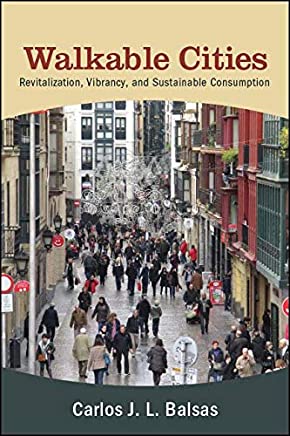
WALKABLE CITIES
Revitalization, Vibrancy, and Sustainable Consumption (2019)
Author:
Carlos J. L. Balsas, the University at Albany, State University of New York.
Sunny Press, State University of Newyork, 2019
Walkable precincts have become an important component of urban revitalization on both sides of the Atlantic. In Walkable Cities, Carlos J. L. Balsas examines a range of city scales and geographic settings on three continents, focusing on the Iberian Peninsula (Spain and Portugal), Latin America (Brazil and Mexico), and the United States (Phoenix and New York City). He explains how this “pedestrianization of Main Street” approach to central locations (downtowns and midtowns) has contributed to strengthening various urban functions, such as urban vitality, pedestrian and bicyclist safety, tourism, and more. However, it has also put pressure on less affluent, peripheral, and fragile areas due to higher levels of consumption and waste generation. Balsas calls attention to the need to base urban revitalization interventions on more spatially and socially just interventions coupled with sustainable consumption practices that do not necessarily entail high growth levels, but instead aim to improve the quality of city life.
The author uses extensive interviews, actual personal field observation plus literature review to document the case studies embedded with the book chapters. The qualitative scholarship approach plus the focus on pedestrian level livability reminds the reviewer of the books by Jane Jacobs’ (1961) The Live and Death of Great American Cities, Donald Appleyard’s (1982) Livable Streets, and Hester Jr.’s (1975) Neighborhood Space. The other more recent comparable book is Moudon’s (1987) Public Streets for Public Use and Jeff Speck’s (2012) book Walkable City: How Downtown Can Save America.
The writing is engaging while figures and photos are supportive. The overall scholarship for urban sustainable practices is good and is well supported by the author’s fieldwork. It is unusual for such a book to cover urban livability and sustainability plus commercial economic development. The author, at times, is a little too prescriptive with some of the recommendations. This book could be used as a textbook for urban sustainable planning or policy courses.
Publication date: October 2019 ISBN13: 978-1-4384-7627-8
More information from the publisher
Learn more on ERSA members published books here.

Stay updated on ERSA upcoming activities, subscribe to ERSA E-newsletter
